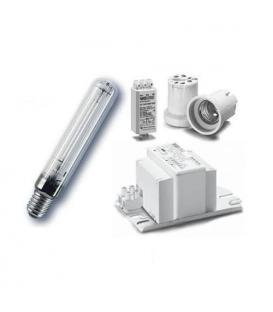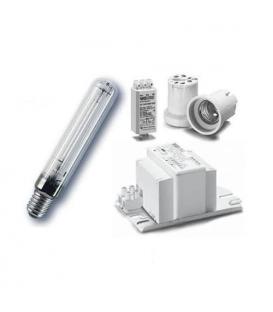DIY lighting kits for plant growing
DIY stands for "Do It Yourself." It refers to the practice of creating, building, or modifying things on your own, typically without the help of professionals or commercial products. DIY projects encompass a wide range of activities, from crafting and home improvement to technology and gardening.
In the context of DIY lighting kits for professional plant growing, it means designing and assembling your own custom lighting setup for indoor plant cultivation. Instead of purchasing a pre-made lighting system, individuals take a hands-on approach by selecting components, building the setup, and configuring it to meet their specific needs and preferences. DIY projects often emphasize creativity, learning, and personalization. They can be both practical and enjoyable, allowing individuals to gain new skills, save money, and achieve a sense of accomplishment through their self-made creations.
Components of a DIY Lighting Kit:
- LED Grow Lights: These are the primary light sources in the kit. Sodium lamps or LED (Light Emitting Diode) technology is favored for its energy efficiency and ability to emit specific wavelengths of light that plants require at different growth stages.
- Light Spectrum: The DIY kit includes Sodium lamps or LEDs that produce a carefully curated spectrum of light, including blue (for vegetative growth), red (for flowering and fruiting), and sometimes additional wavelengths like UV and far-red, which can trigger specific plant responses.
- Mounting System: A robust mounting system is necessary to hang and position the Sodium lamps or LED lights at the optimal distance from the plants to ensure even coverage and prevent light burn.
- Reflectors and Reflective Materials: Reflectors help distribute light evenly and prevent hotspots. Reflective materials on walls or within grow tents can further enhance light penetration.
- Timers and Controllers: These devices allow growers to program the duration and intensity of light cycles, mimicking natural sunlight patterns for different plant stages.
- Cooling System: Sodium lamps can generate heat, so an effective cooling system (such as fans or heat sinks) is crucial to maintain optimal temperatures for plant growth.
Benefits of DIY Lighting Kits for Professional Plant Growing:
- Cost-Effectiveness: Building a DIY lighting kit can be more budget-friendly than purchasing pre-built systems, especially for hobbyists or small-scale growers.
- Customization: DIY kits offer flexibility to choose specific components and tailor the setup to the types of plants being grown and the available space.
- Learning Experience: Assembling and configuring the kit provides valuable hands-on experience and knowledge about the science of plant growth and lighting requirements.
- Scalability: DIY kits can be easily expanded or modified as the growing operation evolves.
- Higher Efficiency: By selecting high-quality components and optimizing the setup, DIY kits can be designed for maximum energy efficiency and light utilization.
Areas of Applications:
- Indoor Gardening: Home gardeners can use DIY lighting kits to grow herbs, vegetables, and flowers year-round, regardless of outdoor conditions.
- Commercial Greenhouses: Small-scale commercial growers can set up DIY lighting systems to supplement natural light or extend the growing season.
- Vertical Farming: DIY kits can be adapted for vertical farming setups, maximizing space utilization and crop yield in limited urban environments.
- Research and Education: Educational institutions and research facilities can benefit from DIY kits to conduct experiments on plant responses to various light conditions.
- Cannabis Cultivation: DIY lighting kits are popular among cannabis growers for controlling light cycles and spectrum to optimize plant growth and cannabinoid production.
- Hydroponics and Aquaponics: These systems can be combined with DIY lighting kits to create controlled environments for soilless cultivation.
- Rare or Exotic Plants: Enthusiasts interested in cultivating rare or exotic plants that require specific light conditions can use DIY kits to recreate their natural habitats.
In summary, DIY lighting kits for professional plant growing offer a cost-effective, customizable, and educational solution for indoor horticulture across various applications. With careful selection and assembly of components, these kits can provide the ideal light environment to foster healthy plant growth and maximize yields.












